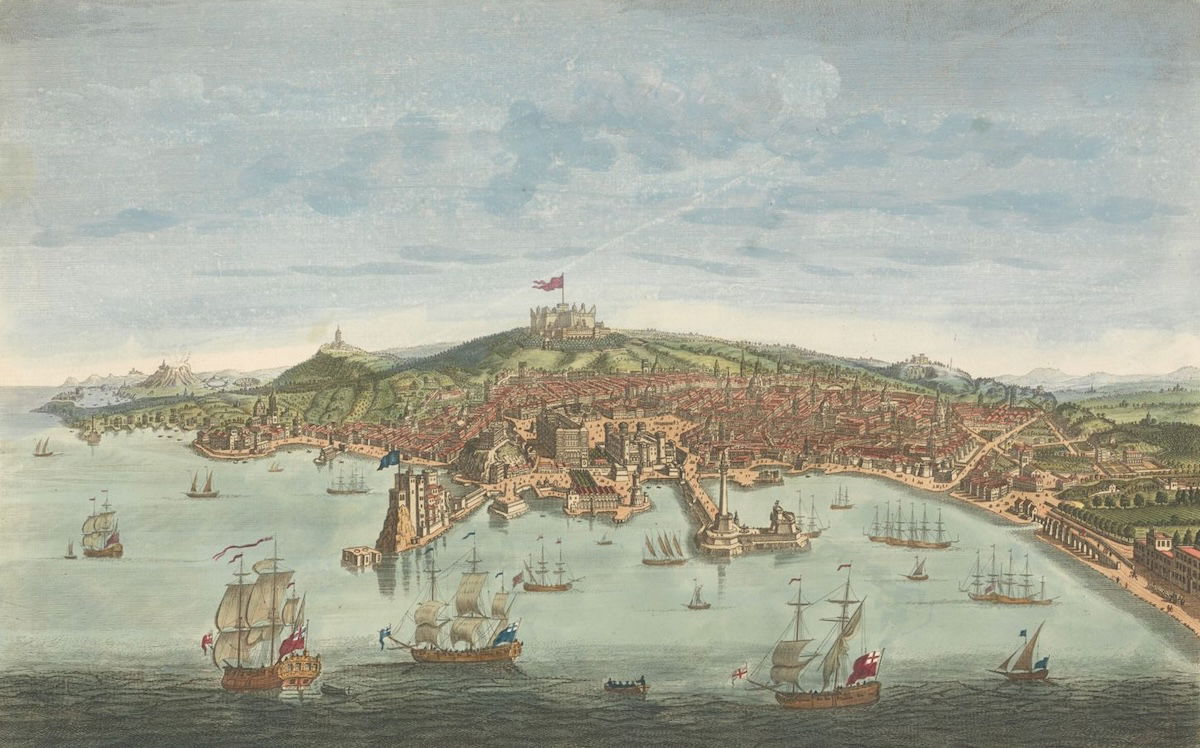‘Naples 1343’ by Amedeo Feniello review
Naples 1343: The Unexpected Origins of the Mafia – Amedeo Feniello’s history of the Camorra – has this much in common with the case against them: it’s all about the evidence.

‘I was born in the land of the Camorra, in the territory with the most homicides in Europe, where savagery is interwoven with commerce, where nothing has value except what generates power.’ So wrote Roberto Saviano in Gomorrah: A Personal Journey into the Violent International Empire of Naples’ Organized Crime System. Sometimes referred to as ‘Italy’s Salman Rushdie’, Saviano has been living under police protection since the publication of this book in 2006, when he began to receive death threats from the Neapolitan crime syndicate. Although Saviano has unveiled this organisation’s practices through his investigative reporting and a multi-season television series, the Camorra continues to traffic drugs, infiltrate politics, corrupt businesses, extort, torture, maim, and kill.
While Saviano focused on the present dangers of the Camorra, the historian Amedeo Feniello, in his newly translated book, searches for its historical origins. As far as we can tell, Feniello has not been personally threatened by the criminals, but the writing of his book was occasioned by a haunting experience. In 2005, a year before Saviano was forced to go into hiding, the Camorra executed three young men at the gates of the Neapolitan school where Feniello worked as a teacher. A violent gang war erupted in the area. ‘What is the source of all this savagery?’ Feniello wondered.
Naples 1343 aims to establish a ‘bond’ between that event from 2005 and another from 1343. In that year, a Neapolitan galley attacked a Genoese cargo ship travelling from Sicily. The ship’s commander was killed, and its cargo – comprising grains and other foodstuffs intended for the richer north – was seized and so remained in the famine-stricken south. Feniello argues that the crime was instigated by Neapolitan nobles, possibly with the tacit approval of the authorities. He suggests that the event foreshadowed the rise of today’s criminal clans.
Unfortunately, a peculiar inconsistency lies at the heart of the book. Although its conclusions are fundamentally plausible, the argument rests on unsteady foundations in terms of both sources and methodology. Despite the author’s valorous insistence on the importance of archival work, not a single unpublished archival document is listed in his bibliography. More lamentable is the fact that Feniello provides incomplete and somewhat misleading information about the sources he uses. The attack on the Genoese ship, for example, is described in a section titled ‘Chronicles of 1343’, where Feniello discusses three sources. First, he quotes from the Genoese Annals by Giorgio and Giovanni Stella, composed around 50 years after the event. He is correct to cite the Annals, but he should have emphasised that they are merely a near-contemporary source, rather than one strictly contemporaneous with the event. He then, via a 1906 publication, indirectly quotes from an 18th-century manuscript by Luca Giovanni d’Alitto. Readers might naturally question the evidential value of a manuscript compiled four centuries after the event. There is no indication of the older sources on which this manuscript, Ancient Monuments of the Kingdom of Naples (a title not disclosed by Feniello), might have been based. Third, Feniello cites a source which, he simply says, ‘dates from 1889 and was recorded by Matteo Camera’. What Feniello fails to mention is that this source is an extract from the 14th-century Secret Histories by Niccolò d’Alife, a contemporary and well-informed high official at the court of Queen Joanna I of Naples. Attentive readers might question why details about the age and author of this source are omitted. Less patient readers, however, might mistakenly assume that Matteo Camera himself, a local historian, authored the description of the ship attack in 1889.
In addition, when it comes to the book’s overall structure, the ship attack provides too weak a frame. Because little is known about this event, the reader – after encountering a few pages about it early in the book – is left waiting in vain for more details that never come. In the anti-climactic final chapter, we hear only that the event ‘simply vanished from sight a few days later’.
As is typical of books intended for a general audience, there is no discussion of previous historiography, where Feniello could have clarified how his interpretation of organised crime differs from that of other historians. Rather than offering a radical new interpretation, he clearly aligns with thosevwho view the origins of the mob as an economic and socio-political phenomenon. Furthermore, Feniello leaves unaddressed the large and exciting body of literature on the history of violence. Historians have long held the view that medieval society was violent to the core. More recent sceptics, however, have questioned this notion by arguing that the survival rate of sources is too spotty to allow for accurate measurement of crime rates.
It is Feniello’s talent as a storyteller that makes the book worth reading, as he vividly depicts the daily life and struggles of medieval people in Naples and the surrounding area. Through these stories and episodes, Feniello portrays famines, families, feuds, brigands, local politics, the perils of commerce, and the ‘bizarre world of knights and city quarters’. He convincingly illustrates his claim that ‘Neapolitan society was a universevin which quarrelsomeness was chronic and not episodic’.
One feels conflicted about recommending this book to critical readers. Armed with a dose of scepticism about Feniello’s sources and methodology, however, many will still find the book rewarding for the windows it opens onto the political and economic world of southern Italy in the Middle Ages, as well as for its thought-provoking argument connecting medieval violence to the current activities of the criminal clans.
-
Naples 1343: The Unexpected Origins of the Mafia
Amedeo Feniello, translated by Antony Shugaar
Other Press, 323pp, £28.99
Buy from bookshop.org (affiliate link)
Stefan Bauer is a Lecturer in History at King’s College London. His most recent books are The Invention of Papal History and A Renaissance Reclaimed (both Oxford University Press).






